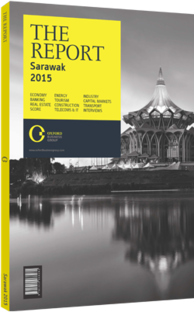Useful information for visitors to Sarawak
Visa Requirements
While Sarawak is part of Malaysia, it has retained some autonomy regarding immigration controls. Visitors must possess a valid passport when entering Sarawak. Those arriving from other Malaysian states and abroad must pass through immigration control upon arrival. Foreign nationals who require a visa to enter Malaysia should obtain it in advance from a representative office. Travellers from most EU countries, ASEAN member states, Australia and the US are allowed a 90-day visa upon arrival. Visitors from other nations may be required to produce an exit flight ticket or proof of sufficient funds. Travelling from Sarawak to Peninsular Malaysia, there are no formalities and you do not start a new entry period, so your permit from Sarawak remains valid.
Language
Sarawak is home to a large number of indigenous ethnic groups that speak a total of over 45 languages and dialects. While the official language of Sarawak is Bahasa Malaysia, English is widely spoken in the state’s cities and urban centres, and increasingly in rural areas as well. With a large Chinese community, Mandarin, Hokkien and other Chinese dialects are common. There are also local variants of Bahasa, known as Bahasa Sarawak or Melayu Sarawak.
Etiquette
Sarawak’s diverse cultural make-up has laid the foundations for the development of a tolerant society. Malay has a rich system of honorific titles granted by the royal families, such as Dato and Tan Sri. Remembering to use them will go a long way.
Currency
Sarawak uses the Malaysian ringgit, or RM, issued by Bank Negara Malaysia. The ringgit is also referred to by some as the dollar, its former name. Notes are in denominations of RM100, RM50, RM20, RM10, RM5 and RM1. RM1 is equivalent to 100 sen, while coins come in 50 sen, 20 sen, 10 sen and 5 sen.
Electricity
Outlets are the standard three-pin square plugs found in the UK. Voltage is 220-240V AC at 50Hz. Bringing an adaptor is advisable, as they are not readily available outside urban centres. Power is generally reliable, although occasional outages are still possible.
Tipping
Tipping is generally not customary or necessary, particularly in local establishments. Should you want to show your appreciation, in most cases you will need to make it clear that you are leaving a tip. Most restaurants include a 10% service charge and 6% government sales tax on bills, while prices advertised usually do not include these levies.
Business Hours
Government offices are open 8am to 5pm, Monday to Friday. Lunch usually runs from midday to 2pm, while many offices close to observe Friday prayers. Hours in the private sector are similar, although longer days are common. The predominantly Chinese area south of the river and near the waterfront is bustling from early morning until the evening. Shopping malls tend to open from 10am to 10pm, while local shops usually close at 7pm. Banking hours are 9.30am to 4.30pm, Monday to Friday, with some larger branches opening on Saturdays until 11.30am.
Transport
Most international visitors arrive through Kuching International Airport. Flights are available to the major destinations in Sarawak, including Sibu, Miri and Bintulu, Tanjung Manis, Mukah and Mulu, while many other rural destinations are also served, albeit with less frequency. Regional connections, including to Kota Kinabalu, Kuala Lumpur, Pontianak and Singapore, are frequent. Regional carriers operating include Malaysia Airlines, MAS wings, AirAsia, Malindo Air, Silk Air and XpressAir. Taxis are available at the airport as well as at stands at the major hotels in Kuching. It is difficult to hail a taxi elsewhere, so it is advisable to keep business cards from taxi companies.
Climate
Sarawak lies less than 100 km north of the equator and has a warm and tropical climate. The temperature is quite stable, usually staying between 23° and 32°C year-round. Humidity is high, usually over 80% in low-lying areas. The north-east monsoon between November and February brings heavy rain, while the south-west monsoon from June through October is milder. The average annual rainfall is between 3300 mm and 4600 mm, depending on the location in the state.
You have reached the limit of premium articles you can view for free.
Choose from the options below to purchase print or digital editions of our Reports. You can also purchase a website subscription giving you unlimited access to all of our Reports online for 12 months.
If you have already purchased this Report or have a website subscription, please login to continue.

